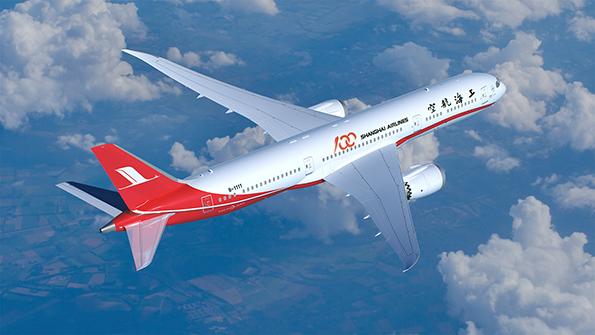A&D Industry And The Chinese Conundrum: Get In Or Out? | 航空宇宙産業と中国の複雑な関係:参入か、撤退か?

欧米の航空会社はさらに多くの政府支援を求め、IATAは業界のキャッシュフローがプラスに転じるのは早くても2022年以降になると予想し、信用機関のアナリストは航空宇宙防衛(A&D)関連ビジネスはさらに1年半は停滞すると予測している。
そんな中、航空ビジネスの世界においては、中国が唯一の明るい場所であることをデータは示している。8月までに、中国国内線の運航は2019年の90%程度にまで回復した。9月末にJefferies社のアナリスト、Sheila Kahyaoglu氏とGreg Konrad氏は「中国は効果的に新型コロナウィルスの感染拡大をコントロールしており、1日の陽性者数を100人以下に抑え込んでいる。そして巨大な国内線マーケットが存在することから、民間航空需要の回復は他の国々よりも早いことが予想される」と指摘した。
「現在のところ、本当に以前の状態に近いといえる領域は2つあり、ひとつは中国国内線、もうひとつは約2,000機の貨物機だ」と同調するのは、AeroDynamic Advisory社のマネージングディレクター・Kevin Michaels氏だ。なお、それ以外については「まるで血の海だ。そして、誰もがそのことを認識している」と、9月に開催されたAviation Week SpeedNewsカンファレンスの場で話した。
ここでA&D業界のサプライヤーは、重大な二者択一を迫られることになる。サプライヤーやサービス事業者は中国でのビジネスに向かうべきか、それとも撤退するべきか?
この選択の是非が議論されている理由は単純だ。コロナ危機が航空機製造やMRO業界に対し、ジェット機の黎明期以降で最大の転換期をもたらす以前から、中国における航空ビジネスの是非は議論されてきた。最大の理由は、トランプ政権と世界第2の経済大国の貿易戦争だ。そして、知的財産権の問題や、Avic社・Comac社やその他中国企業の中に、将来の競合を作ってしまうリスクなどは今でも議論が尽きない。
一方、アメリカ国内に生産拠点を戻す「リショアリング」や、カナダやメキシコに移転させる「ニアショアリング」の支持者達は、これが持つ潜在的な可能性を声高に主張している。10月6日に開催されたAerospace and Defense Forumの場で、Reshoring Initiative社の社長・Harry Moser氏は「論理的には、これはコロナ危機が明らかにした長期的なサプライチェーンのギャップを埋めるということになる」と語った。
そして、オートメーションや技術革新により北米の人件費を相殺できるようになったことから、支持者以外もリショアリングに有利な条件が整いつつあることを認めている。さらに、A&D産業はアメリカにおけるインフラの重要な部分とみなされている。加えて、中国の人件費はここ数十年で5倍に上昇しており、立地選定のコンサルティングを手がけるDuff & Phelps社は、アメリカに移転するべき産業の筆頭としてA&Dを挙げた(図を参照)。
ただし、立地選定の判断基準は複雑で、サプライチェーンの移転はそれ以上に複雑なものだ。当面、世界で最も民間航空需要が多い国が中国だとされていることに加え、早ければ2025年には、長きに渡り最大のマーケットだったアメリカから首位の座を奪い取る可能性もあり、その動きはさらに加速するだろう。さらに、中国政府は輸入よりも国内供給を重視していく姿勢を見せている。OCO Global China社のゼネラルマネージャー・Yi Zhang氏によると、この「眠れる巨人」の将来的な市場規模は1兆ドルを超える可能性があるという。
このことが、サプライヤーの注目を集めている。6月にワシントン州の経済開発担当部門が、中国における航空ビジネスをテーマにしたオンラインセミナーを主催し、Zhang氏はこのことについて講演した。これはボーイング社がワシントン州ピュージェットサウンドにおける787生産中止の考えを明らかにするよりも、実に1ヶ月も前の話だ。
今や、欧米での航空需要が一向に改善されないことから、中国でのビジネスチャンスはさらに明るく輝いて見える。
それでも、Vertical Research Partnersのアナリスト・Rob Stallard氏は、9月24日に発表されたレポート「Caveat Venditor(売り手は気をつけろ)」の中で、欧米のA&D企業が中国進出を急ぐことに警鐘を鳴らしている。「中国政府はコロナ後の優位性を確立させるための動きを取っており、間違いなくA&D産業もその影響を受けることになる。まだまだ欧米中心である航空産業と中国の関係性において、今後さらに多くの見返りを要求されることになるだろう。価格はもちろん、サプライチェーンや技術の移転などは、政治的な問題と同様に交渉材料にされる可能性がある」とStallard氏は言う。
「航空産業は、より大きな貿易戦争の一部として巻き添え被害を受ける可能性がある。おそらく、中国主導による航空業界の回復という良いニュースを見られることになるだろうが、そこに付いてくる条件については注意を払うべきだ」と同氏は書いている
以上は、Michael Brunoが Aviation Week & Space Technologyいた記事です。Aviation Week Intelligence Network (AWIN) のメンバーシップにご登録いただくと、開発プログラムやフリートの情報、会社や連絡先データベースへのアクセスが可能になり、新たなビジネスの発見やマーケット動向を把握することができます。貴社向けにカスタマイズされた製品デモをリクエスト。
Western airlines are begging for more government aid, the International Air Transport Association does not expect the industry to see positive cash flow before 2022, and credit agency analysts forecast depressed aerospace and defense business activity for up to another 1.5 years.
Meanwhile, data continues to portray China as the lone bright spot in the aviation world. By August, Chinese domestic flights had recovered to about 90% of 2019 levels. “China has been effectively controlling the spread of COVID-19, limiting cases to less than 100 a day. Combined with a large domestic market, the recovery in commercial aviation is expected to outpace the rest of the world,” Jefferies analysts Sheila Kahyaoglu and Greg Konrad noted in late September.
“Right now, really, the two areas of traffic that are close to normal are domestic China and the roughly 2,000 all-cargo aircraft out there today,” echoes AeroDynamic Advisory Managing Director Kevin Michaels. Otherwise, “it’s a bloodbath, and we’re all aware of that,” he told an Aviation Week SpeedNews conference in September.
For aerospace and defense (A&D) suppliers, the dichotomy sets up a critical decision: Should suppliers and servicers run toward China—or run away?
It is easy to understand why they are debating the question. Long before COVID-19 gutted commercial air traffic and kick-started what is expected to be the greatest makeover of aircraft manufacturing and the maintenance, repair and overhaul industries since the dawn of the jet age, there were already good reasons to debate being in China. Topping the list was the Trump administration’s trade war with the world’s second-largest economy. Ongoing questions lingered about intellectual property rights and the specter of inadvertently creating future competitors in Avic, Comac and other Chinese companies.
Proponents of reshoring industry to the U.S.—or “nearshoring” to Canada or Mexico—are certainly touting potential opportunity. “The logical thing is to fill longer-term and COVID-revealed supply chain gaps,” Reshoring Initiative President Harry Moser told an Aerospace and Defense Forum audience on Oct. 6.
Others agree that conditions are ripe for reshoring, not least because automation and advanced technologies that replace humans can offset North American costs. Also, A&D has been deemed a critical part of U.S. infrastructure. And Chinese unit labor costs have risen fivefold in recent decades. This summer, site-selection consultant Duff & Phelps identified A&D as a top candidate for moving to America (see chart).
But siting decisions are complex, and supply chain moves are even more so. Not only is commercial aviation looking strongest in China now and in the near future, but it could accelerate a long-expected toppling of the U.S. as the world’s leading aviation market, possibly as soon as 2025. Increasingly, Beijing officials talk about relying on domestic supply instead of imports. Indeed, the “Sleeping Giant” could boast a future estimated aviation market value of more than $1 trillion, according to Yi Zhang, general manager of OCO Global China.
That catches suppliers’ attention. Zhang spoke in June to a well-attended webinar hosted by Washington state economic development officials about aerospace opportunities in China, and that was a month before Boeing revealed it was even thinking about scrapping 787 production in Puget Sound, Washington.
Now China’s opportunities beckon brighter with no snapback in Western air traffic.
Still, in his Sept. 24 report titled “Caveat Venditor,” or “seller beware,” Vertical Research Partners analyst Rob Stallard cautions Western A&D companies against rushing toward China. “We see the Chinese government leveraging its position of relative post-COVID strength in coming years, and no doubt aerospace will see some of the fallout,” Stallard says. “As the biggest show in town, we would expect to see more quid pro quo in China’s relationship with what is still very much a Western aerospace industry. Price, supply chain and technology transfer could be on the table, as could politics.
“Aviation could conceivably suffer collateral damage as part of a broader trade war,” Stallard writes. “So while investors will probably see good news in a Chinese-led aero recovery, we would be looking for any strings attached.”